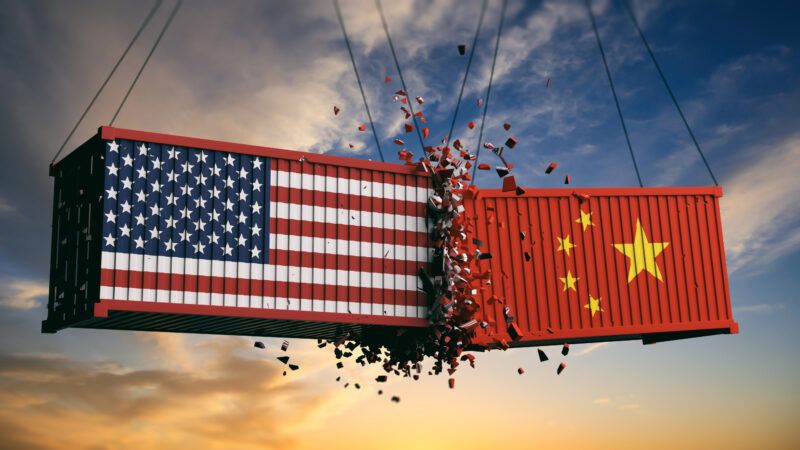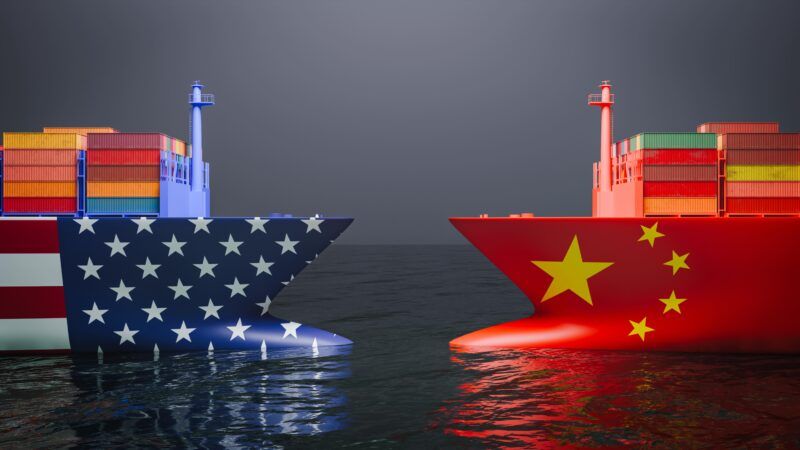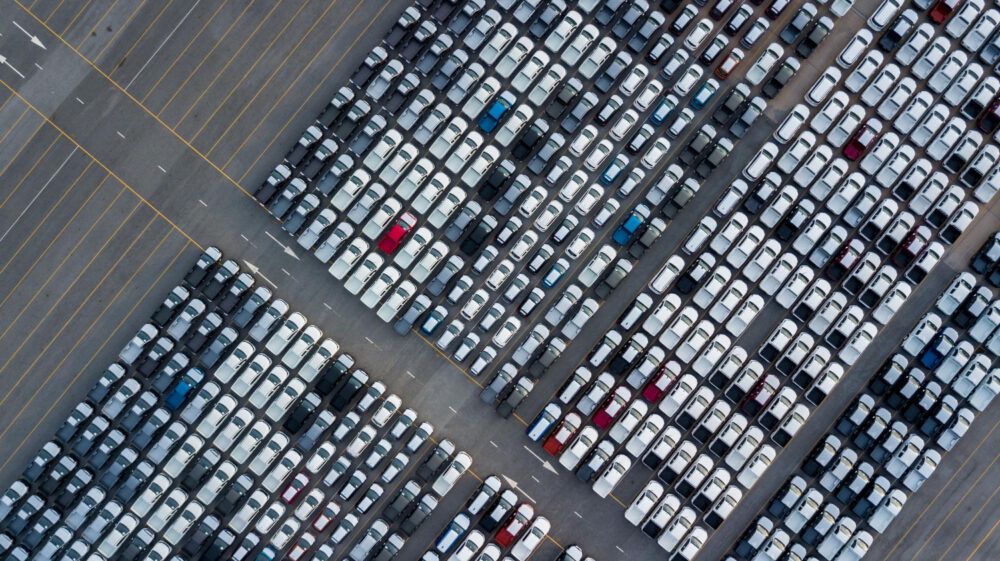
A new logistics for the automotive industry
The maritime transport of vehicles is facing a major challenge. The demand for services by the automotive industry is much higher than the supply, which has led to a lack of car carriers, in addition to congesting the vehicle terminals of some of the main European ports. All this leads to the need to create a new logistics model.

Vehicle transportation skids
Rarely is the relationship between manufacturing, logistics and the disruptive events that paralyze distribution and trigger the emergence of new distribution models to address these issues so clearly.
In this case, the focus is on the automotive industry.
- In March 2024, vehicle production fell by 17.7% compared to the same month in 2023, due to component sourcing problems in several factories, delays caused by the Red Sea crisis, and production adjustments due to market demand.
- For its part, the leading provider of automotive industry forecasts, LMC Automotive (now GlobalData), revised upward in the first quarter of 2023 its estimate for global light car sales in 2023, expecting to reach 86.1 million units, slightly higher than the 85.7 million units projected at the beginning of that year.
With the recovery in the pace of automobile manufacturing, there is concern about the shortage of means of transport available for vehicle production. Specifically, the lack of means of transport to transport vehicles.
Spain has gone from having 3,500 vehicle-carrying trucks before the pandemic to just over 2,700 at present, representing a drop of nearly 25%. Maritime transport is the most used by the Spanish automotive industry, with 2.2 million units moved last year, 9.2% more than in the previous year.
Maritime transport is the most used by the Spanish automotive industry, with 2.2 million units moved last year, 9.2% more than in the previous year.
“During the pandemic, vehicle production disappeared, and when it tried to rebound, it was hit by the microchip crisis. This caused major congestion in the ports of northern Europe that coincided with the increase in vehicle production in China,” contextualizes Lluís París, head of the automotive, RoRo, SSS and bulk division of the Port of Barcelona.
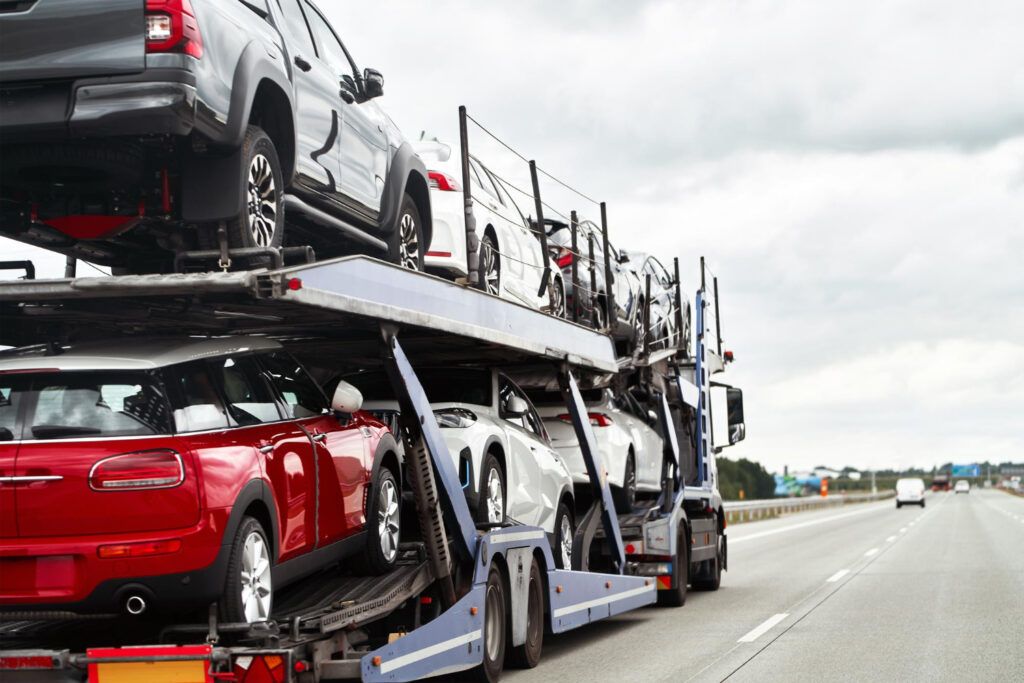
Ports are saturated
Historically, the port of Zeebrugge has always ranked first in vehicle handling in Europe, with Antwerp usually in the top five. The port authority reported a combined handling of 3.26 million new passenger cars in 2022, a year-on-year growth of 5.7%.
Both ports have seen volumes continue to increase in 2023, with new vehicle handling reaching 905,000 units in the first quarter, up 7.2% on the same quarter in 2022.
“Traditionally, European automotive logistics has been centered in northern Europe, in ports such as Bremerhaven or Zeebrugge. However, this is changing because most manufacturers have realized that there is a need for at least two entry points in Europe. In addition, the terminals in the south have expanded and now store vehicles more efficiently thanks to the addition of vertical parking lots,” explains Paris.
The German port of Bremerhaven recorded a 5.8% year-on-year decline in vehicle volumes to 1.6 million units in 2022, a drop that reflects both capacity shortages and demand. BLG Logistics, which manages BLG AutoTerminal Bremerhaven, points to the war in Ukraine, energy costs, inflation and a shortage of skilled workers. The situation remained in 2023, and the port points to solutions to increase flexibility, digitalization, automation and sustainability.
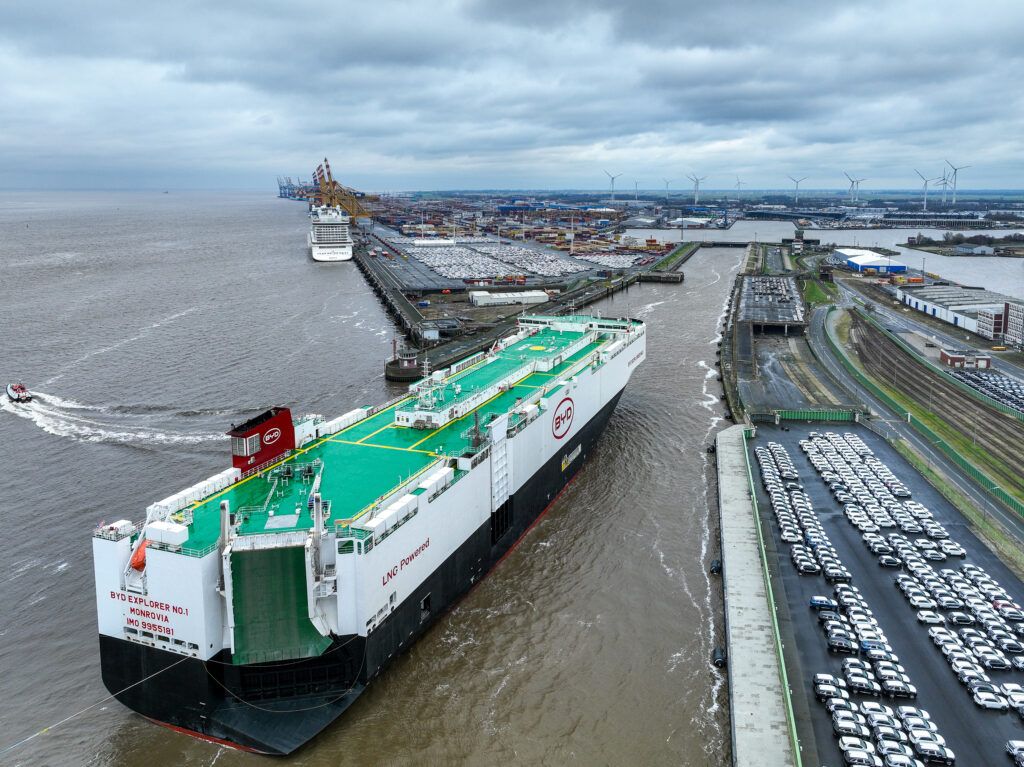
The market: Asia emerges and complicates automotive logistics
Lluís París explains that the main changes come from Asia.
- First, in South Korea, where 3,757,049 vehicles were manufactured in 2022 , a growth in production of 8.51% compared to 2021.
- Second, China' s annual vehicle production accounts for more than 32% of the world's vehicle production, which exceeds that of the European Union or the United States and Japan combined. In 2023, auto production exceeded 30.16 million units, up 11.6% year-on-year, according to data released by the China Association of Automobile Manufacturers (CAAM).
In the case of the Asian giant, in the current context, this volume generates great logistical complexities, since, as Paris explains, its exports currently occupy the entire fleet of car carriers in the world and, even so, it is not enough to accommodate these volumes. The solution? Transporting them in containers.
China's annual vehicle production exceeds that of the European Union or the United States and Japan combined. This volume generates great logistical complexities. Their export currently occupies the entire fleet of car carriers in the world, and even so, it is not enough to accommodate these volumes. The solution? Transporting them in containers.
“A further 150 car carriers are being built, which will start operating between 2025 and 2027 and, at the moment, containerized cars are being exported. In 2021 the Port of Barcelona received 800 containerized cars and last year the figure increased to 30,000. By July 2024 we had already registered 40,000, which is a tremendous disruption because it is a more complex logistics, since transporting them in containers increases the chances of damaging the vehicle,” says Paris.
This means a change in operations and in the level of management for the ports, since these cars arrive at the container terminal and then must be transported by truck to the car terminal, Autoterminal in the case of Barcelona, to be added to the manufacturer's stock. This consumes resources and means at both terminals. And Paris predicts that this situation will last for a couple of years yet.
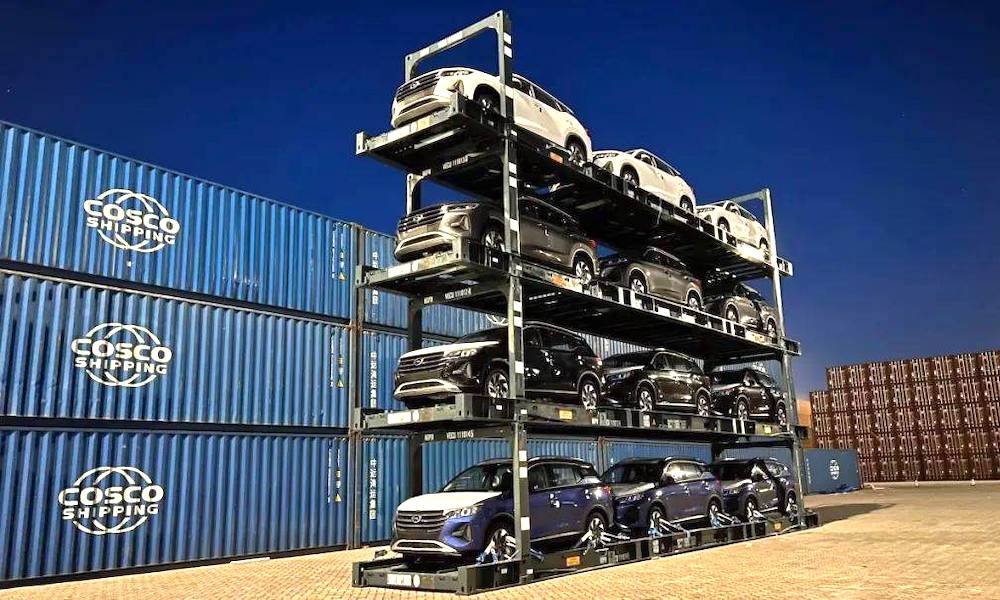
Shipping companies are trying to offer solutions
The shipping lines themselves are also looking for solutions to the lack of car carriers to provide an outlet for the stock ofautomobile manufacturers. Cosco Shipping, for example, has invested in an alternative to containers; 48-foot flat racksthat transport vehicles on bulk carrier ships, which have been unloading in Barcelona for more than a year.
The shipping line has been bringing cars, between 800 and 1,000 a month, in containers to Barcelona's BEST terminalon its regular container lines for months.
The Liner Operation department manager of Cosco Shipping Lines Spain, Xun Yu, confirmed that the adaptation of vessels not specialized in automobile transport responds to the growing export of Chinese vehicles, a dynamic that would have skyrocketed in 2023.
For the European industry, Paris shares, a solution to overstocking would be to manufacture the vehicle once the customer has already purchased it, specifying all the elements he wants to incorporate. However, the emergence of Chinese cars and their selling price makes this made-to-order concept difficult. “We need another way to distribute these cars,” he explains.

Extending port space, the most common solution
- Some European ports are committed to expanding capacity by building new terminals.
In the case of Barcelona, the construction of a third one has been approved in addition to the two available (Autoterminal and Setram). The current ones total one million square meters, which occupy 500,000 meters of port space, and the rest is destined for vertical garages.
Next to both, where the Hutchinson container terminal used to be located, is a 10-hectare site which, Paris explains, is currently used as an expansion area for cars if, for example, they are to be loaded and unloaded in a relatively short time and it is not worth parking them in the vertical garages.
It will be where this new terminal will be located, which also has the advantage of being located near the train tracks, one of Barcelona's bets in terms of logistics and sustainability: “The Port receives, daily, three trains from the Martorell factory of Seat/Audi, a dozen more a week from other domestic manufacturers for destinations in the Mediterranean and Western Europe. Also between 7 and 9 UIC gauge trains with Central European vehicles that also serve the export of domestic manufacturers,” he lists.
More examples. The Slovenian port of Koper recorded an exceptional year 2022, moving more than 801,000 vehicles, a year-on-year increase of 22%, despite the disruptions affecting vehicle logistics across Europe and a shortage of storage space at the port.
Port spokesmen explained that they were able to attract new volumes as customers sought alternatives to other vehicle terminals in Europe that were struggling with their own problems. At the end of the year, the Slovenian port began construction work on new vehicle storage areas with a capacity of 3,500 vehicles, which have been operational for a year.
- Other ports are investing in improved IT systems and collaborating with manufacturers and logistics providers.
This is the case in Piraeus, whose car terminal teams have been working more closely with trucking companies to move vehicles out, increasing gate opening hours and helping to speed up loading and delivery times.
The Greek port is also investing in new technology and expanding its facilities with a new TOS (terminal operating system) that has been supporting operations and providing better visibility of the terminal's status to customers and users.Expansion work on the car terminal, which was due to come on line at the end of 2023 expands capacity to 5,400 slots and will further relieve pressure.
- The challenges are many, but now is not the time for ports to lower their arms, but rather to consider a new way of working in logistics for the automotive market.
Tariffs on Chinese cars: a whim of European law, a trap set by the Commission or pure ignorance?
All this new logistics for new vehicles, which involves significant investments by operators and manufacturers, is now in danger due to the recent approval of additional tariffs on the import of Chinese electric cars to the EU (up to 35.3% for certain brands).
These additional tariffs have been approved without the support of major EU countries such as Germany and Spain, nor of major European automotive manufacturers, which thus see joint projects with Chinese brands and their sales in the Asian giant endangered.
“Spain abstained, largely to try to avoid Chinese retaliatory tariffs on Spanish exports (cars made in Spain and pork, for example) and to avoid jeopardizing investments by Chinese manufacturers in negotiation or already announced, such as Chery's investment in the former Nissan site in Barcelona's Zona Franca,” explains Jordi Torrent, head of strategy at the Port of Barcelona.
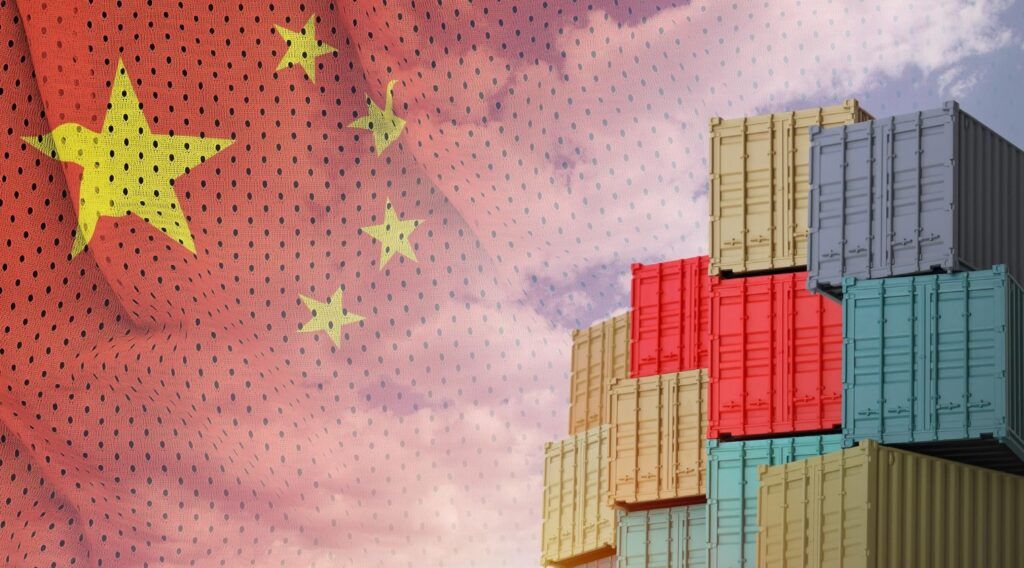
La medida ha sido propuesta y aprobada por la Comisión Europea con tan solo el apoyo de 10 de los 27 Estados miembros de la UE (5 se han opuesto y 12 se han abstenido). Estos 10 Estados tienen unos 200 millones de habitantes, menos de la mitad de la población de la UE, y producen, esto es lo más sorprendente, sólo unos 2,7 millones de vehículos de los aproximadamente 14 que se fabrican en la UE.
How has this been possible?
“Because of the EU's curious regulatory and legal procedures,” Torrent answers. A regulation approved by the Council and Parliament gives the Commission the executive power to propose and develop tariff measures against subsidized imports originating from non-EU countries, in this case the import of Chinese electric vehicles. “But it does so by resorting to a regulation as enormously important as it is unknown to ordinary mortals: the “Comitology” regulation, (EP and Council regulation 2016/1037 of June 8, 2016),” notes Torrent.
All this means that a measure raising tariffs on existing Chinese electric vehicles by up to an additional 35.3%,depending on the brand, only has to be validated by a simple majority in a committee of member state representatives. “It was easy, therefore, for the Commission (which contrary to popular belief is not the “community executive” in the classic sense) to convince some member state governments to support the measure,” explains the Port of Barcelona's head of strategy, ”despite the fact that the leading German automotive brands and large countries such as Spain had spoken out against it.”
Torrent, finally, points out the fact that this is “a measure that is also curious to a certain extent, since Chinese brands are penalized for something that also happens with European brands, if we take into account the strong public participation in Renault and Volkswagen or the substantial aid in the form of subsidies that many European automotive plants have received”.



